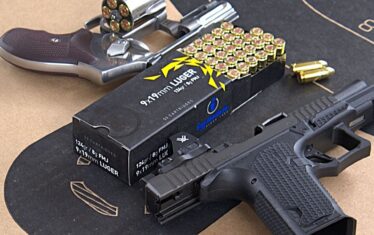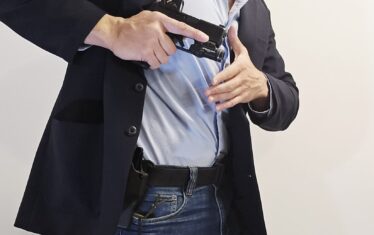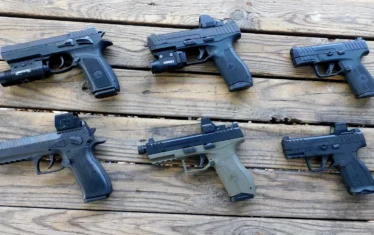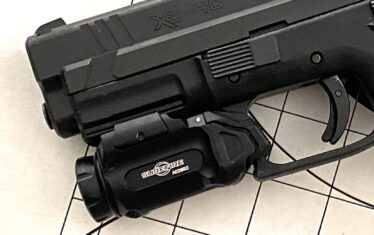I carried a gun professionally for a mere five years, primarily a machine gun. I also carried an M9 in a rather crappy holster I won’t name here. It was slow and awkward, and that led me to believe that speed and retention were enemies — you couldn’t have both in a holster and professionals had to choose one over the other.
That belief started to fade when I began using Safariland duty holsters. Maybe speed and retention aren’t enemies after all.
Speed vs Retention
As a civilian, I attended several LEO-focused training classes this year, where I learned that many shared my previous conclusion that retention hinders speed. And if retention is the enemy of speed, then Level 3 holsters are the boss fight for a quick draw.
There was plenty of discussion among students about not engaging the SLS device to quickly defeat the ALS and draw their gun, believing that engaging the SLS slowed them down. However, this essentially turns a level 3 holster into a Level 1.
This got me wondering. I only know a few things for sure, and of those things is that I’m often wrong. With that in mind, I set off to figure out if retention really is the enemy of speed.
To achieve this goal, I needed a Level 3 holster. I went with a Safariland 6304RDS on a Bianchi Duty belt in a QLS fork.
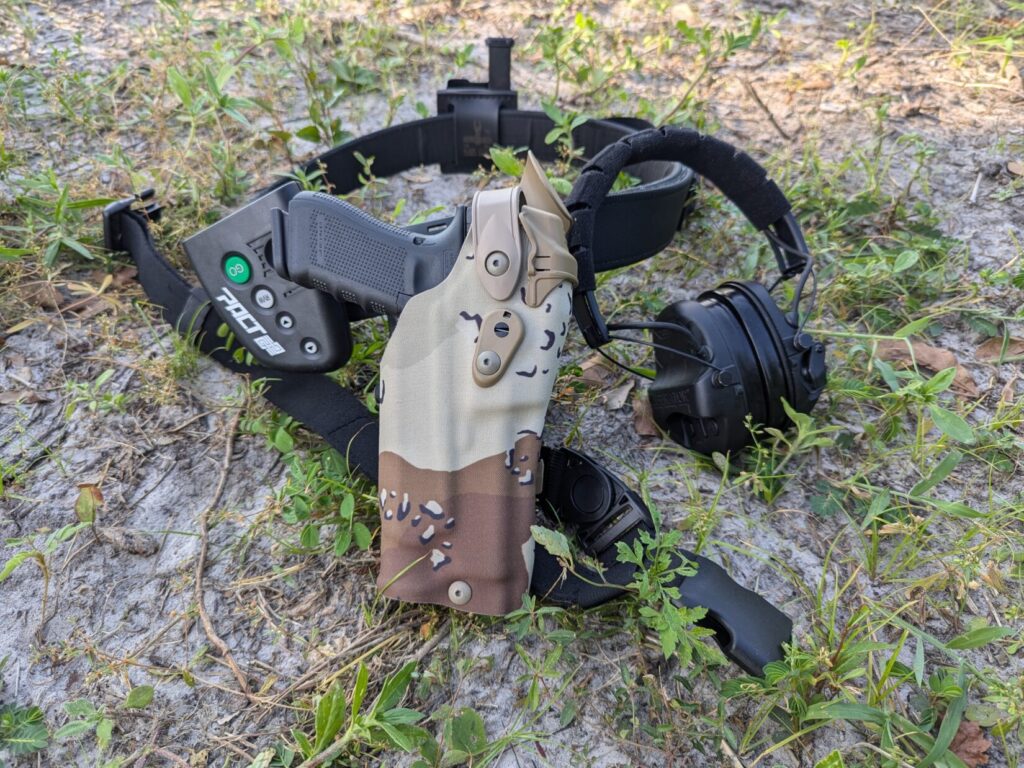
It’s a decent representation of the modern duty holster that’s light and optic-ready with both SLS and ALS systems. I got my hands on one, set myself up, and came up with a plan.
How fast can I draw and get a shot on target from a Level 3 holster?
I’m moderately experienced with firearms, and if I drill hard enough, I can consistently maintain a sub-second draw from an AIWB position with an Incog X holster and my beloved P365.
I used a level 1 ALS holster in my last two classes and became proficient with it. Before this experiment, I had never used a Level 3 holster or the SLS, so this was a new experience all around.

My goal was fairly modest at first: Draw from a Level 3 holster and fire one shot onto an IPSC A-Zone in 1.5 seconds at seven yards. It’s a modest goal, but stricter than most police officer qualifications I’ve seen.
After accomplishing 1.5 seconds, I wanted to draw in 1.25 seconds, then 1.1 seconds, and finally, if at all possible, under 1 second. It was lofty, but why not aim high?
My Speed Method
Slow is smooth, and smooth is fast, which isn’t compatible with how I train. It might work for you, but for me, going as fast as possible and refining along the way works a lot better.
I knew that dry fire would be a huge part of this speed vs. retention experiment; in fact, it’d be the majority of the training. My plan began with dry fire in three-day blocks, with a live fire day on the fourth day.
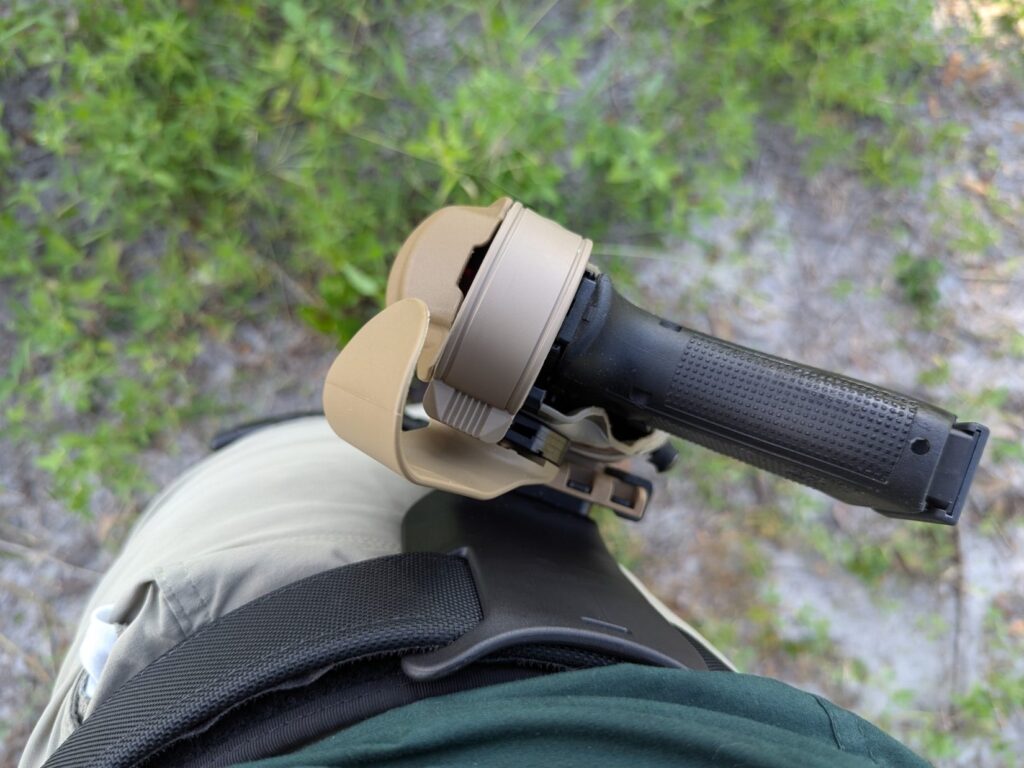
I would dry fire practice for a minimum of 15 minutes a day, but when possible, I would practice more. Life’s busy, what can I say? I broke my practice down bit by bit, working each part of my draw as fast as I could, and dedicating a few minutes to a complete draw at the end of each session.
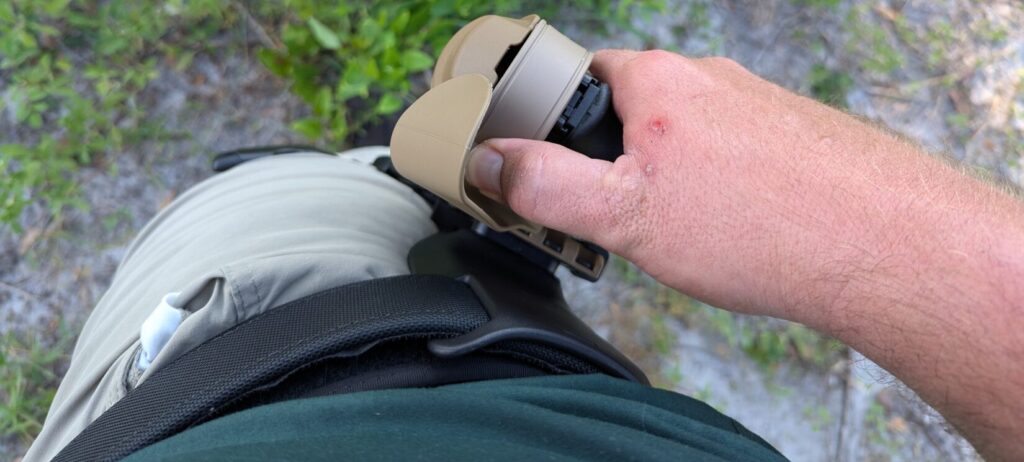
The Level 3 Draw
I broke the drill down into the following stages:
- Hand to the gun, thumb on SLS strap.
- Defeat SLS and ALS retention systems.
- Draw the gun upward and orient forward.
- Push to support hand.
- Extend and aim the firearm.
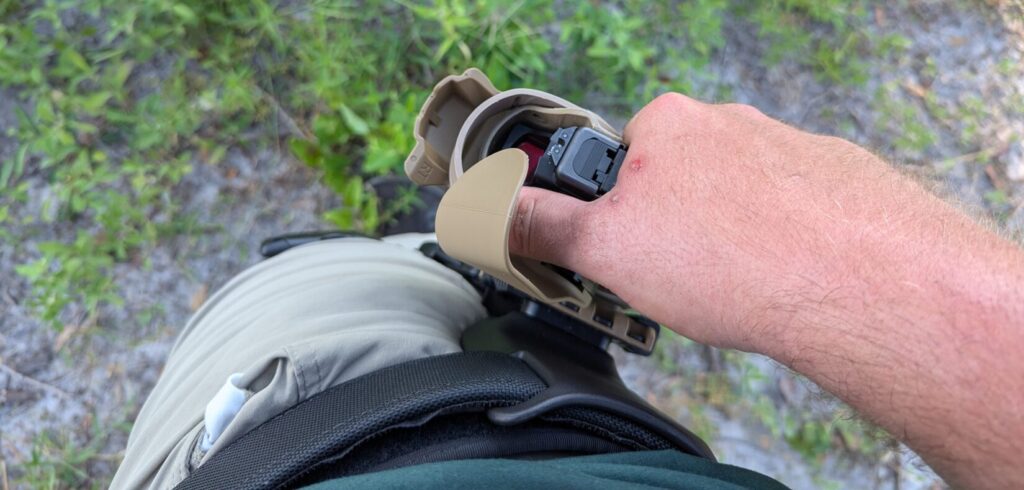
I drilled each movement methodically, over and over, breaking it down piece by piece. Eventually, I combined them, ladder-style, building my draw and mastering the retention defeat from the ground up.
The clicks of the ALS, SLS, and optics cover became a familiar song I could repeat in my head over and over. I fell into a rhythm, and that rhythm turned into speed.
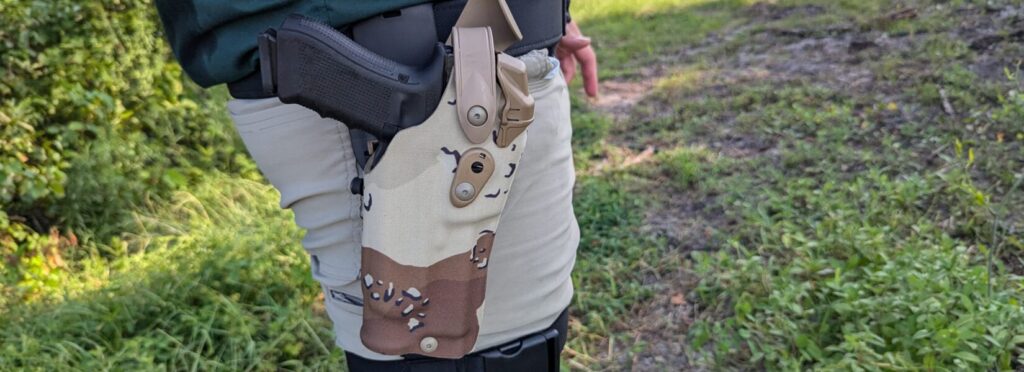
While 15 minutes was the minimum, I found myself getting nearly 30 minutes of practice a day. A hurricane knocked my power out, so I had fewer distractions and seemingly more time to train.
After three days of drawing in the heat and hearing the clicks and pops of retention devices, I went live fire.
Level 3 Quirks
Before we get to the results of my first live-fire, let’s discuss some of the things I learned about Level 3 retention holsters.
First, it is true that each added layer of retention increases the complexity and potential for user error. However, Safariland clearly invested significant time and effort into creating a system that’s both intuitive and efficient. Their design allows for speed while still providing three distinct movements to unlock and free the gun.
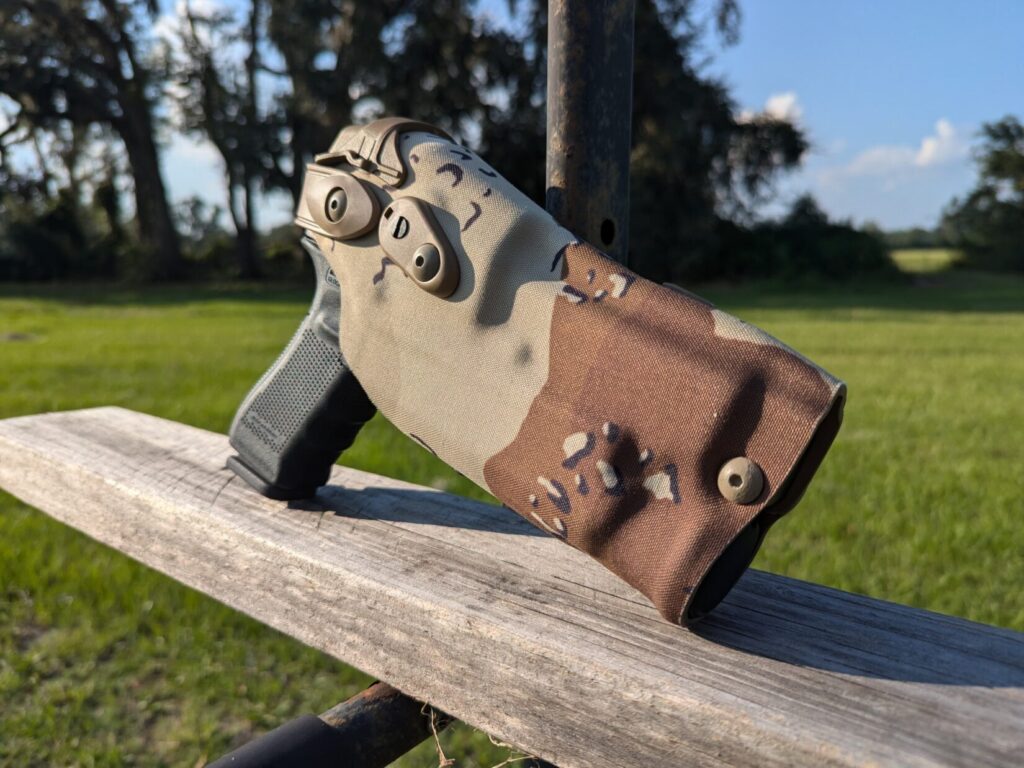
Training isn’t just about speed; it’s about mastering the retention devices. You need to train to make sure your thumb reliably engages the SLS every time you grip your gun. Understand the ALS’s position to sweep it in relation to the SLS and how to pull the gun from the holster at the exact time — too early and you fumble your draw; too late and you lose precious seconds.
Mastering those retention devices is the key to success. With the SLS you have to press down and then forward. To do it quickly it has to be one smooth and continuous motion. Without movement ever stopping you need to sweep your thumb rearward to defeat the ALS device. As soon as that device moves, it’s time to draw upward.
Range Day
After three days of consistent dry-fire practice totaling 80ish minutes, I went to the range. I hadn’t timed my draw at all — no shot timer, no par timer, nothing. Just dry practice.
I brought a shot timer to the range to get an accurate measurement of my speed. It had only been three days with dry fire, and I didn’t expect to meet my goal. I expected to be able to diagnose further any issues and work those out the next week.
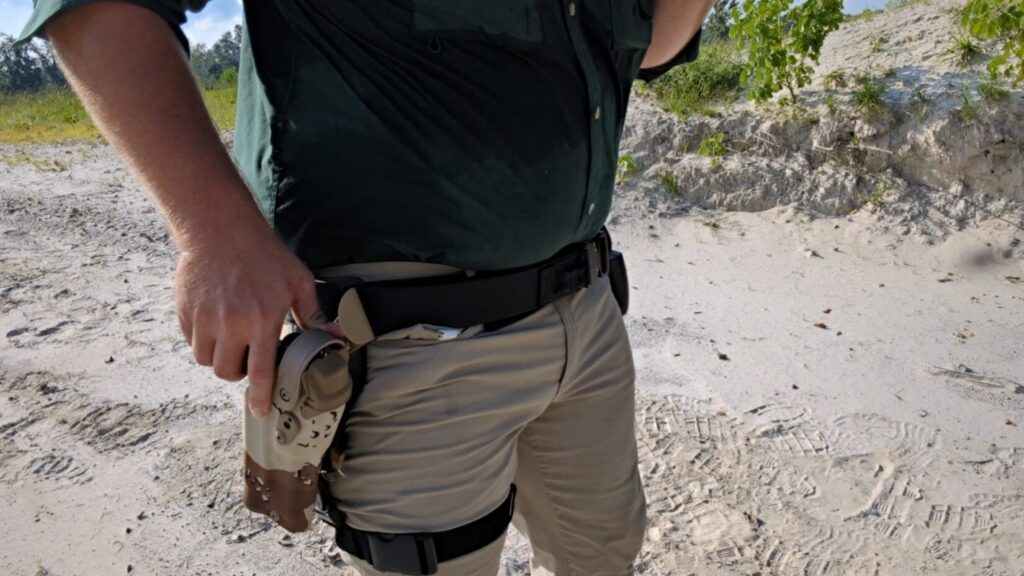
Imagine my utter shock that on my first draw, my cold draw, I scored an A-zone hit in 1.32 seconds. I had beaten the first goal.
I won’t lie; I was psyched, utterly and completely psyched. I kept shooting, and within a few shots, I was hitting it in 1.2 seconds. Near the end of my practice, I was scoring between 1.1 to 1.2 seconds.
I wouldn’t believe it if I wasn’t there, but my last shot was a .94. That sub-second was one of those few times that everything worked perfectly.
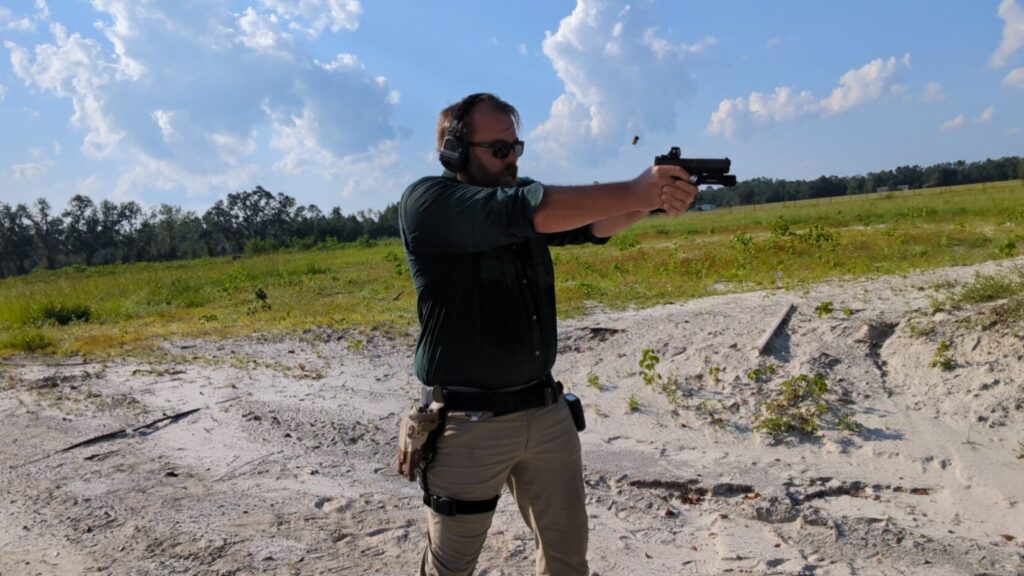
For a master, perfection is the norm, but for me it was more or less luck with a tiny bit of skill. What’s most important is that I was able to achieve that kind of time in the first place. It shows that it is possible and that speed and retention don’t have to be opposing forces.
Field Notes
A few things need to be mentioned. First, the most important draw was the first draw. The first cold draw represents my skill. No one gets to warm up before a gunfight. Being warmed up isn’t the best indicator of skill, but it did indicate that it’s possible to draw from a Level 3 holster in less than a second.
The second thing you should know is that my sub-one-second draw was sloppy. It was fine for the first shot, but I didn’t get the best grip with my support hand. I overextended and locked out my elbows. The combination of the two didn’t affect my first shot on target, but it would affect follow-up shots due to poor recoil control.
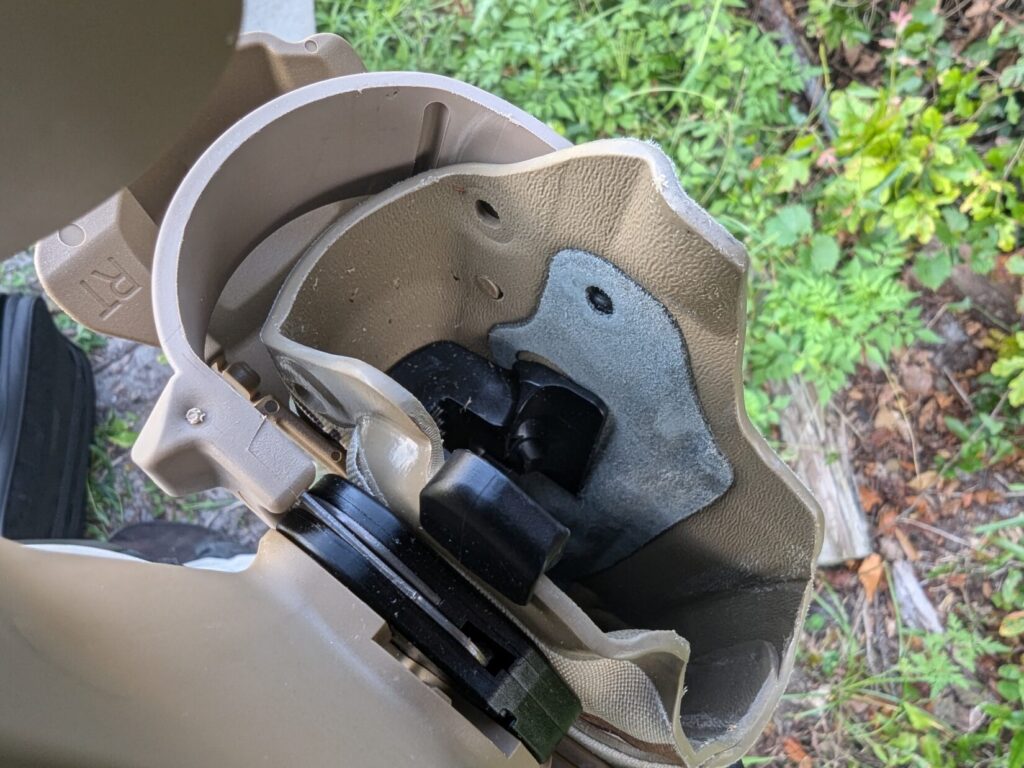
I need to refine and perfect my skills, so I plan to keep up with my three days of dry fire followed by one day of live fire. A quick draw doesn’t have to be restricted by retention devices. Those devices demand consistent and dedicated training — not just once a week but daily practice.
It might take more work to get the draw quick, but it’s well within the realm of possibility. I’ve come to the conclusion that speed and retention don’t have to be mortal enemies. They can work together to create a safe and efficient holster.






